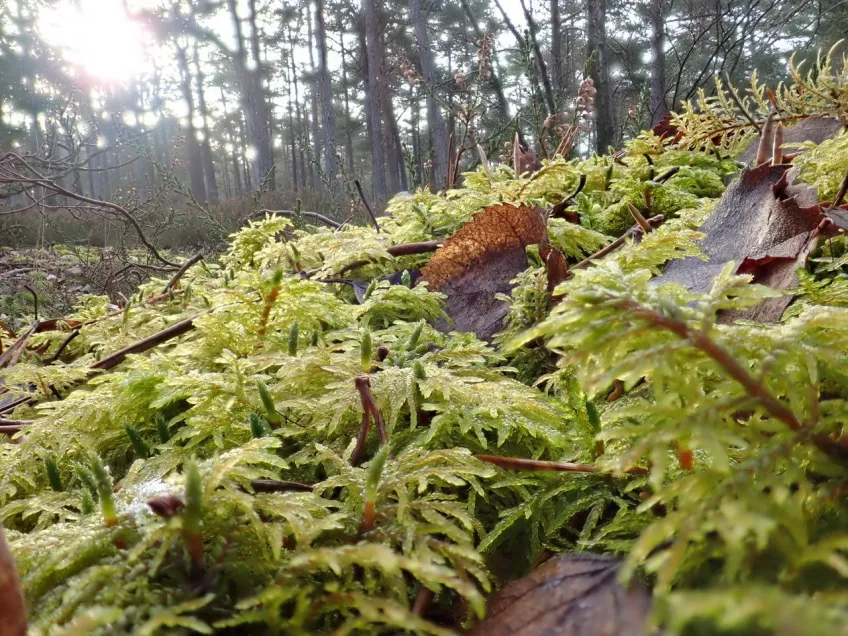Bryophyte Morphology and Identification BIOR97
5 credits
Bryophytes are important components of many kinds of vegetation, especially in moist or cold biomes, such as arctic tundra, alpine heaths, boreal forest, various types of wetlands, mountain cloud forest and tropical rainforest. In total, about 22 000 species are described, and more than 1200 of these are known from Scandinavia. The bryophyte lineages – mosses, liverworts and hornworts - originated and diverged during the early colonization of terrestrial habitats by plants. They have retained key roles in ecosystems, such as water retention, nutrient cycling and primary production (photosynthesis). These roles have historically often been misunderstood or neglected, but modern research have resurrected the importance of bryophytes and pointed to their position as evolutionary links between the first land plants and more recent groups of plants, such as the flowering plants.
You will study representatives of these lineages to learn about their morphological characters, reproductive strategies, habitat requirements and ecological roles. You will learn to use the botanical terminology for bryophytes. Experts on different groups will guide you through the secrets of species determination. You will get an overview of bryophyte phylogeny and diversity. Bryophytes have a life-cycle dominated by the haploid generation, in strong contrast to other land plants which are dominated by the diploid generation. You will examine the different stages of this life cycle and get insights in the genetic consequences of such a life cycle.
We also aim to develop a deep understanding of species concepts used for bryophytes, including the ability to critically evaluate such species concepts, skills that are applicable both in practical conservation work and in taxonomic research.
The course is part of the main field of study in Biology at the Faculty of Science. The course is also a part of a Nordic Masters programme in Biodiversity and Systematics (NABIS).
Net-based learning
The first part of the curriculum is net-based. You will study morphology, terminology and fylogeny of the different bryophyte lineages. You will also explore databases and other tools available through Internet.
Field course
This part of the course is located to a field station in Southern Sweden. You will train identification of species in the field and with the aid of microscope.
Examination
Examination is based on two written assignments and an identification test. The final grade is determined by a combination of the result from the written assignment and the species identification test.
And then…
The course is optional in the Masters program in Biology, with specializations such as Conservation biology or Plant Science. Species identification skill is a key proficiency for admission to biological jobs in nature protection, conservation, environmental monitoring and systematics/taxonomy.
Autumn period 1
Full-time, distance, in English
Application
Course literature, 2023
Introduction to Bryophytes. A. Vanderpoorten & G. Goffinet. Cambridge University Press 2009. ISBN: 9780511537202 (available as an e-book through Lund University)
Bryophyte Ecology. Volume 1. Physiological Ecology, Glime, Janice M., 2007 Ebook sponsored by Michigan Technological University and the International Association of Bryologists
Schedule
The course is web based with one compulsory excursion,
Course period 2024: September 23 to October 11, with the excursion between October 5 - 11.
Evaluation
You will find the latest evaluation on our web page with course evaluations.
Questions?
Lotta Persmark, Study advisor, biology and bioinformatics
Telephone: +46 46 222 37 28
Email: Lotta [dot] Persmark [at] biol [dot] lu [dot] se (Lotta[dot]Persmark[at]biol[dot]lu[dot]se)


